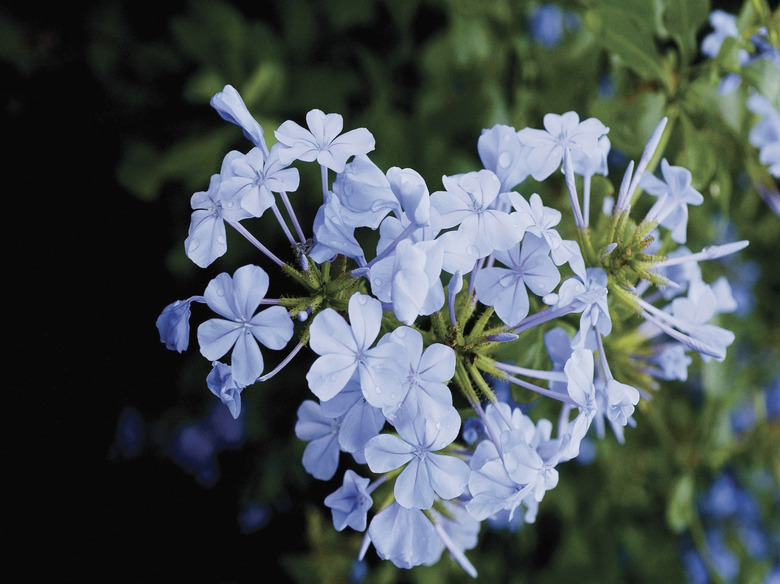How To Grow Plumbago In Pots
Things Needed
- Wheelbarrow
- Potting soil
- Sand
- Shovel
- Unglazed clay or wood planter
- Mulch
- Water
- Pruning shears
Plumbago plants have the botanical name of Plumbago auriculata, and are an evergreen shrub that produces pale blue or white flower clusters. The flowers persist for most of the year, from early spring through the late fall in their native warm climate. Although most gardener's plant plumbago in the ground, their naturally rounded growth pattern also works well in large pots. Potted plumbago grows outdoors in United States Department of Agriculture growing zones 8b through 11.
Step 1
Fill a wheel barrow or large tub with a half-and-half mixture of potting soil and coarse sand. Mix the two together to create a well-draining soil mix.
Step 2
Clean out a large plant pot made of either unglazed clay or wood, which both allow the plant to breath and release heat. Place the pot in the final position with full sunlight, since it is heavy once you place the soil mixture in it. Plumbago survives in partially shady locations, but may not flower.
Step 3
Fill the pot half full of the prepared soil mix. Remove the plumbago plant from the nursery pot by turning the pot on its side and gently pulling the roots out. Insert the roots into the center of the new pot. Add additional soil mix until it rises to the same level as the root system.
Step 4
Water the soil until the excess emerges from the bottom. Water the soil at least once per week and increase to twice per week in the summer months. Although plumbago is typically drought resistant, potted plumbago dry out much faster than in-ground plants.
Step 5
Spread 1 inch of mulch on top of the soil to prevent moisture loss.
Step 6
Prune the plumbago in the late winter, cutting the stems back as far as desired to reduce the height. Then shape the plant into a rounded form by cutting off an additional 1/4 to 1/2 inch from each tip sloping downward as you move toward the edges of the plant.
Tip
Plumbago does not have problems with pests or diseases. If desired, you can cut the plumbago back to the surface of the ground when pruning to rejuvenate it.
